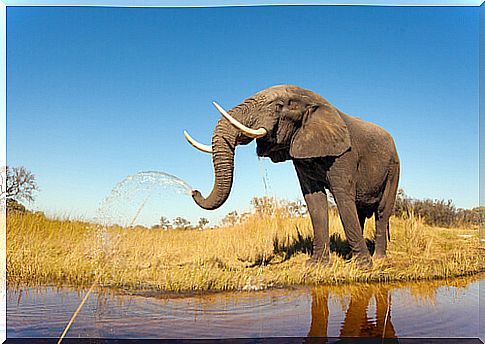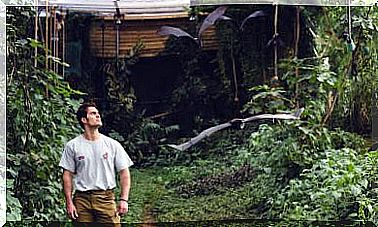Elephant Cemeteries, Myth Or Reality?

Throughout history, much has been said about the possible existence of elephant graveyards, a specific area where the elephants of Africa go to die and pass away. During the colonial times of the European nations in the old continent, the myth was very recurrent and sought after.
The reason for this relentless search is financial. Ivory in those days, and even today, has a high monetary value, so finding a cemetery for these animals is equivalent to running into El Dorado in America.
What are elephant graveyards?
As its name suggests, it is a site where a large number of corpses of these animals are found. The location of this place is a complete mystery, considered a myth even before European civilizations set foot on the continent.
According to the African myths of different tribes, elephants, when they feel that death is stalking them, separate from the group so as not to be a burden and slow down the herd. These animals separate, and go there, where no human has been before, to die in peace.
Of course, Europeans, upon hearing this story, began to search for the location of this ‘crypt’ of pachyderms, especially for the elephant’s tusks, which are made of ivory. Ivory is a precious mineral with a high monetary value used as a decoration for various jewels.
But as with El Dorado, no trace of these elephant graveyards has ever been found anywhere in Africa. And to this day it remains a mystery that feeds the imagination of men. Most people believe that it is due to the protection of ancient gods and ancient guardians.

The facts
Let’s take into account the size of the African savannas and deserts : it is a very large area, where the agglomeration of these animals does not seem possible. Elephants are migratory, so it is common to see herds traveling great distances to find the best survival sites with food and water.
This is why it is unlikely to find elephant cemeteries on the continent, given that the animals are constantly on the move to perpetuate the existence of the species. It is common to see two or five corpses in one place, but more than this number is very rare.
When we find many corpses of any animal it is due to the effects of nature or human beings. Climate changes, droughts and indiscriminate hunting motivate the appearance of these cemeteries, but it has never been proven that these animals have a designated place to die or bury their dead.
An example from nature is at Lake Rudolf in Kenya; the lake is extremely salty and has surely poisoned many herds of elephants over the years. Thanks to this, it is common to find large quantities of skeletons on its coast.
Also, the wind influences the location of the bones. In what sense? For the strong winds of the savannas are capable of causing the bones to change places and disperse from their corpse.
Elephants have great intelligence, so their curiosity is quite great. We mention this because it is common to see an elephant stand in front of the bones and ‘offer’ respects to the deceased.

Myth or Reality?
When referring to this myth we have to say that it is a half truth. It is false that animals have a specific place to die, and that the accumulation of their corpses is due to a coincidence.
We can find several corpses in one place, but never in large quantities as is believed to be found. The reasons for this are due to the environmental conditions of the area and the indiscriminate hunting of these animals.
Despite this, there is still a belief that elephant graveyards can be found on the ancient continent. In addition, they have been the inspiration for various film productions throughout the 20th century.
- They are referenced in at least two films: the original Tarzan from 1938 where the plot revolves around the search for one of these sacred sites. In The Lion King , one of the scenes is set in an elephant graveyard.
- The Bolivian film called El cementerio de los elephantes revolves around this idea, a bar where marginalized men go to spend their days drinking and lamenting.









